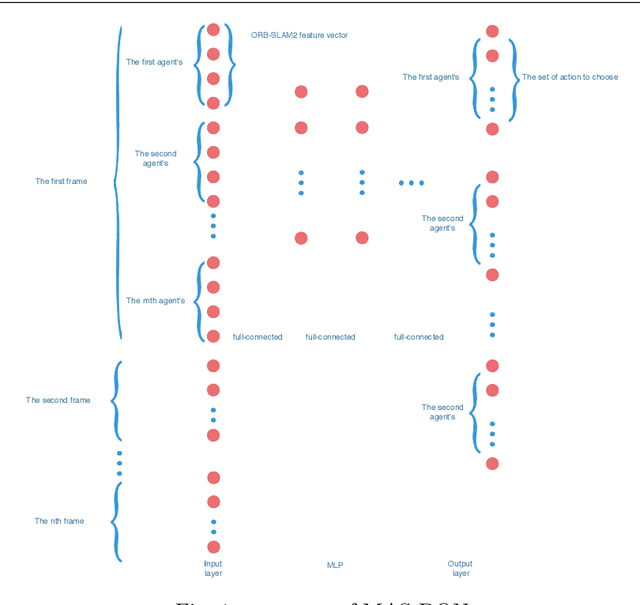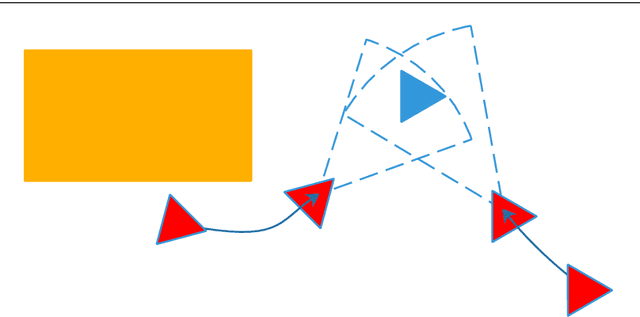Guo Li
Temporal-IRL: Modeling Port Congestion and Berth Scheduling with Inverse Reinforcement Learning
Jun 24, 2025Abstract:Predicting port congestion is crucial for maintaining reliable global supply chains. Accurate forecasts enableimprovedshipment planning, reducedelaysand costs, and optimizeinventoryanddistributionstrategies, thereby ensuring timely deliveries and enhancing supply chain resilience. To achieve accurate predictions, analyzing vessel behavior and their stay times at specific port terminals is essential, focusing particularly on berth scheduling under various conditions. Crucially, the model must capture and learn the underlying priorities and patterns of berth scheduling. Berth scheduling and planning are influenced by a range of factors, including incoming vessel size, waiting times, and the status of vessels within the port terminal. By observing historical Automatic Identification System (AIS) positions of vessels, we reconstruct berth schedules, which are subsequently utilized to determine the reward function via Inverse Reinforcement Learning (IRL). For this purpose, we modeled a specific terminal at the Port of New York/New Jersey and developed Temporal-IRL. This Temporal-IRL model learns berth scheduling to predict vessel sequencing at the terminal and estimate vessel port stay, encompassing both waiting and berthing times, to forecast port congestion. Utilizing data from Maher Terminal spanning January 2015 to September 2023, we trained and tested the model, achieving demonstrably excellent results.
FedHL: Federated Learning for Heterogeneous Low-Rank Adaptation via Unbiased Aggregation
May 24, 2025Abstract:Federated Learning (FL) facilitates the fine-tuning of Foundation Models (FMs) using distributed data sources, with Low-Rank Adaptation (LoRA) gaining popularity due to its low communication costs and strong performance. While recent work acknowledges the benefits of heterogeneous LoRA in FL and introduces flexible algorithms to support its implementation, our theoretical analysis reveals a critical gap: existing methods lack formal convergence guarantees due to parameter truncation and biased gradient updates. Specifically, adapting client-specific LoRA ranks necessitates truncating global parameters, which introduces inherent truncation errors and leads to subsequent inaccurate gradient updates that accumulate over training rounds, ultimately degrading performance. To address the above issues, we propose \textbf{FedHL}, a simple yet effective \textbf{Fed}erated Learning framework tailored for \textbf{H}eterogeneous \textbf{L}oRA. By leveraging the full-rank global model as a calibrated aggregation basis, FedHL eliminates the direct truncation bias from initial alignment with client-specific ranks. Furthermore, we derive the theoretically optimal aggregation weights by minimizing the gradient drift term in the convergence upper bound. Our analysis shows that FedHL guarantees $\mathcal{O}(1/\sqrt{T})$ convergence rate, and experiments on multiple real-world datasets demonstrate a 1-3\% improvement over several state-of-the-art methods.
Unlocking Multimodal Integration in EHRs: A Prompt Learning Framework for Language and Time Series Fusion
Feb 19, 2025Abstract:Large language models (LLMs) have shown remarkable performance in vision-language tasks, but their application in the medical field remains underexplored, particularly for integrating structured time series data with unstructured clinical notes. In clinical practice, dynamic time series data such as lab test results capture critical temporal patterns, while clinical notes provide rich semantic context. Merging these modalities is challenging due to the inherent differences between continuous signals and discrete text. To bridge this gap, we introduce ProMedTS, a novel self-supervised multimodal framework that employs prompt-guided learning to unify these heterogeneous data types. Our approach leverages lightweight anomaly detection to generate anomaly captions that serve as prompts, guiding the encoding of raw time series data into informative embeddings. These embeddings are aligned with textual representations in a shared latent space, preserving fine-grained temporal nuances alongside semantic insights. Furthermore, our framework incorporates tailored self-supervised objectives to enhance both intra- and inter-modal alignment. We evaluate ProMedTS on disease diagnosis tasks using real-world datasets, and the results demonstrate that our method consistently outperforms state-of-the-art approaches.
TENPLEX: Changing Resources of Deep Learning Jobs using Parallelizable Tensor Collections
Dec 08, 2023Abstract:Deep learning (DL) jobs use multi-dimensional parallelism, i.e they combine data, model, and pipeline parallelism, to use large GPU clusters efficiently. This couples jobs tightly to a set of GPU devices, but jobs may experience changes to the device allocation: (i) resource elasticity during training adds or removes devices; (ii) hardware maintenance may require redeployment on different devices; and (iii) device failures force jobs to run with fewer devices. Current DL frameworks lack support for these scenarios, as they cannot change the multi-dimensional parallelism of an already-running job in an efficient and model-independent way. We describe Tenplex, a state management library for DL frameworks that enables jobs to change the GPU allocation and job parallelism at runtime. Tenplex achieves this by externalizing the DL job state during training as a parallelizable tensor collection (PTC). When the GPU allocation for the DL job changes, Tenplex uses the PTC to transform the DL job state: for the dataset state, Tenplex repartitions it under data parallelism and exposes it to workers through a virtual file system; for the model state, Tenplex obtains it as partitioned checkpoints and transforms them to reflect the new parallelization configuration. For efficiency, these PTC transformations are executed in parallel with a minimum amount of data movement between devices and workers. Our experiments show that Tenplex enables DL jobs to support dynamic parallelization with low overhead.
Quiver: Supporting GPUs for Low-Latency, High-Throughput GNN Serving with Workload Awareness
May 18, 2023Abstract:Systems for serving inference requests on graph neural networks (GNN) must combine low latency with high throughout, but they face irregular computation due to skew in the number of sampled graph nodes and aggregated GNN features. This makes it challenging to exploit GPUs effectively: using GPUs to sample only a few graph nodes yields lower performance than CPU-based sampling; and aggregating many features exhibits high data movement costs between GPUs and CPUs. Therefore, current GNN serving systems use CPUs for graph sampling and feature aggregation, limiting throughput. We describe Quiver, a distributed GPU-based GNN serving system with low-latency and high-throughput. Quiver's key idea is to exploit workload metrics for predicting the irregular computation of GNN requests, and governing the use of GPUs for graph sampling and feature aggregation: (1) for graph sampling, Quiver calculates the probabilistic sampled graph size, a metric that predicts the degree of parallelism in graph sampling. Quiver uses this metric to assign sampling tasks to GPUs only when the performance gains surpass CPU-based sampling; and (2) for feature aggregation, Quiver relies on the feature access probability to decide which features to partition and replicate across a distributed GPU NUMA topology. We show that Quiver achieves up to 35 times lower latency with an 8 times higher throughput compared to state-of-the-art GNN approaches (DGL and PyG).
Fast and Flexible Human Pose Estimation with HyperPose
Aug 26, 2021



Abstract:Estimating human pose is an important yet challenging task in multimedia applications. Existing pose estimation libraries target reproducing standard pose estimation algorithms. When it comes to customising these algorithms for real-world applications, none of the existing libraries can offer both the flexibility of developing custom pose estimation algorithms and the high-performance of executing these algorithms on commodity devices. In this paper, we introduce Hyperpose, a novel flexible and high-performance pose estimation library. Hyperpose provides expressive Python APIs that enable developers to easily customise pose estimation algorithms for their applications. It further provides a model inference engine highly optimised for real-time pose estimation. This engine can dynamically dispatch carefully designed pose estimation tasks to CPUs and GPUs, thus automatically achieving high utilisation of hardware resources irrespective of deployment environments. Extensive evaluation results show that Hyperpose can achieve up to 3.1x~7.3x higher pose estimation throughput compared to state-of-the-art pose estimation libraries without compromising estimation accuracy. By 2021, Hyperpose has received over 1000 stars on GitHub and attracted users from both industry and academy.
Learning Generalized Spatial-Temporal Deep Feature Representation for No-Reference Video Quality Assessment
Dec 27, 2020



Abstract:In this work, we propose a no-reference video quality assessment method, aiming to achieve high-generalization capability in cross-content, -resolution and -frame rate quality prediction. In particular, we evaluate the quality of a video by learning effective feature representations in spatial-temporal domain. In the spatial domain, to tackle the resolution and content variations, we impose the Gaussian distribution constraints on the quality features. The unified distribution can significantly reduce the domain gap between different video samples, resulting in a more generalized quality feature representation. Along the temporal dimension, inspired by the mechanism of visual perception, we propose a pyramid temporal aggregation module by involving the short-term and long-term memory to aggregate the frame-level quality. Experiments show that our method outperforms the state-of-the-art methods on cross-dataset settings, and achieves comparable performance on intra-dataset configurations, demonstrating the high-generalization capability of the proposed method.
TailorGAN: Making User-Defined Fashion Designs
Jan 20, 2020



Abstract:Attribute editing has become an important and emerging topic of computer vision. In this paper, we consider a task: given a reference garment image A and another image B with target attribute (collar/sleeve), generate a photo-realistic image which combines the texture from reference A and the new attribute from reference B. The highly convoluted attributes and the lack of paired data are the main challenges to the task. To overcome those limitations, we propose a novel self-supervised model to synthesize garment images with disentangled attributes (e.g., collar and sleeves) without paired data. Our method consists of a reconstruction learning step and an adversarial learning step. The model learns texture and location information through reconstruction learning. And, the model's capability is generalized to achieve single-attribute manipulation by adversarial learning. Meanwhile, we compose a new dataset, named GarmentSet, with annotation of landmarks of collars and sleeves on clean garment images. Extensive experiments on this dataset and real-world samples demonstrate that our method can synthesize much better results than the state-of-the-art methods in both quantitative and qualitative comparisons.
* fashion
Active collaboration in relative observation for Multi-agent visual SLAM based on Deep Q Network
Sep 23, 2019



Abstract:This paper proposes a unique active relative localization mechanism for multi-agent Simultaneous Localization and Mapping(SLAM),in which a agent to be observed are considered as a task, which is performed by others assisting that agent by relative observation. A task allocation algorithm based on deep reinforcement learning are proposed for this mechanism. Each agent can choose whether to localize other agents or to continue independent SLAM on it own initiative. By this way, the process of each agent SLAM will be interacted by the collaboration. Firstly, based on the characteristics of ORBSLAM, a unique observation function which models the whole MAS is obtained. Secondly, a novel type of Deep Q network(DQN) called MAS-DQN is deployed to learn correspondence between Q Value and state-action pair,abstract representation of agents in MAS are learned in the process of collaboration among agents. Finally, each agent must act with a certain degree of freedom according to MAS-DQN. The simulation results of comparative experiments prove that this mechanism improves the efficiency of cooperation in the process of multi-agent SLAM.
 Add to Chrome
Add to Chrome Add to Firefox
Add to Firefox Add to Edge
Add to Edge